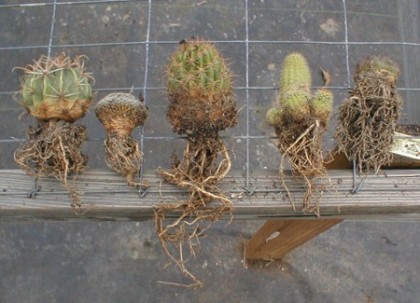When one thinks of cacti, images of arid landscapes and striking silhouettes often come to mind. But behind their distinctive exteriors lies a complex and fascinating root system. Have you ever pondered the question: Do cactus plants have deep roots? This query is not merely academic; understanding the root system of cacti poses a playful challenge in appreciating how these resilient plants thrive in unforgiving environments. Let’s dive deep into the world of cactus roots.
Cacti are remarkable and versatile plants primarily found in deserts and arid regions. To appreciate their survival strategies, it’s essential to explore the intricacies of their root systems. By adapting their roots, cacti maximize water intake, allowing them to flourish where other plants struggle.
The morphology of cactus roots is a product of evolutionary ingenuity, tailored for life in harsh conditions. Cacti can possess either deep or shallow root systems, which serve different purposes depending on their habitat. Generally, two key types of root systems design cacti: the taproot system and the fibrous root system. Each plays a vital role in the plant’s overall health and survival.
An exploration of cacti often begins with the taproot system. This primary root extends deep into the soil, anchoring the plant while enabling it to access moisture that is otherwise out of reach for shallower-rooted plants. The taproots can descend several feet into the ground, sometimes 10 to 15 feet deep! Remarkably, these roots can store water, acting as reservoirs when drought conditions prevail. This depth gives cacti a significant advantage during prolonged dry spells.
In contrast, many cacti species feature a fibrous root system, where numerous thin roots spread laterally near the surface. These roots are adept at capturing water quickly from brief rain events, enabling the cactus to absorb moisture efficiently before it evaporates. This system also helps stabilize the plant in sandy or loose soils where wind poses a threat. Given that many desert regions experience sporadic rainfall, this characteristic of fibrous roots exemplifies adaptability and survival.
There is also a middle ground; some cacti have both deep and shallow roots, optimizing resource acquisition. This dual system enhances their resilience and adaptability, allowing them to thrive in fluctuating conditions. So, whether a cactus has deep roots or not often depends on its ecological niche and evolutionary history.
Another intriguing aspect of cactus root systems is how they interact with soil organisms. Mycorrhizal fungi, for instance, form symbiotic relationships with cactus roots, expanding their reach and enhancing nutrient absorption. These fungi improve the overall health of the cactus by aiding in the uptake of phosphorus and other essential minerals, vital for growth and development. This partnership exemplifies the interconnectedness of desert ecosystems and the critical role cacti play in these environments.
However, while the root systems of cacti are impressive, they also present unique challenges. For instance, planting cacti in non-native or overly compacted soil can be detrimental. Such environments may inhibit root expansion and water uptake, ultimately stunting growth. Gardeners must thus ensure that cacti are provided with suitable conditions that mimic their natural habitats to thrive.
Moreover, the depth of a cactus’s roots can influence its susceptibility to environmental changes. A plant with a predominantly shallow root system may struggle to survive in extended periods of drought or extreme temperatures. Conversely, those with deeper roots are better equipped to withstand prolonged dry spells and can even endure rainless periods far longer than their shallower counterparts.
Understanding these dynamics can empower gardeners and enthusiasts alike. When cultivating cacti, it is vital to consider species-specific needs, including soil type, watering regimen, and environmental factors. For newly planted cacti, providing sufficient space for root growth is crucial. Compact or overly mineral-rich soils may stifle the plant’s ability to adapt and reach its full potential.
In an age where climate change affects ecosystems worldwide, comprehending the adaptability of cactus root systems can also have broader implications. Cacti are often regarded as flagship species, serving as indicators of environmental health. By studying their root systems, scientists can gain insights into resilience strategies that may inform conservation efforts across ecosystems. As desert environments become increasingly pressured, safeguarding cacti and their habitats becomes imperative.
In conclusion, do cacti have deep roots? The answer is multifaceted. With an array of root adaptations, many cacti are equipped to thrive in the harshest conditions. Understanding these remarkable systems not only enhances our appreciation of these plants but also provides us with valuable insights into broader ecological principles. As we explore desert landscapes, let us remember the silent strength of cacti—rooted deeply in resilience.





Leave a Comment